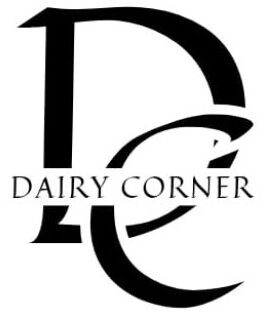Milk fever (Parturient Paresis) is also known as Hypocalcemia.
Milk fever is an important metabolic disorder in dairy Cattles, which is usually seen at calving due to the low level of blood calcium level.
High producing Cattles are more prone to Milk fever if they fed on lush green diet during pre-transition period.
Etiology:
Milk fever is mainly caused by the deficiency of calcium in blood. Following are the factors which affects blood Calcium level.
Calving date/History:
Milk Fever mainly occur in First 24 hours after parturition but its still occurs between 2-3 days post calving.
Sometimes, it occurs before calving due to the drain of too much calcium in the Colostrum.
Production:
High producing dairy cattles are more prone to milk fever because too much calcium is drained in milk as compared to replacement.
Breed:
Some breeds are naturally more prone to milk fever. e.g Jersey.
Age/Lactation:
Dairy cattles at 5th OR 6th Lactation are more susceptible to milk fever as compared to the 1st and 2nd lactation cows because of their high milk production and Secondly, loosing the ability to replace the calcium quickly and utilizes the reserves at the time of need (mainly at Calving).
Feeding in transition period:
Feeding of pregnant cows is crucial in the pre-transition (3 weeks before calving) period.
Avoid using calcium as it activates the reserves in the body and regulate the calcium mechanism in the body.
Using high calcium before parturition will lead to less absorption of calcium in the body.
High protein feed can create an alkaline environment which leads to the less absorption of calcium in the body.
Clinical sign:
The most common signs of Milk fever are:
- 1st anorexia, restless, muscle shivering, followed by general depression.
- Later, staggers, goes down in a “sitting position”, often turning neck toward side in a lethargic and drowsiness condition.
- As you know, the calcium regulates the heart beat. So, hypoglycemia leads to the weak heartbeat, and slow respiration, which leads to temperature drops and body become cold.
- There will be constipation or absence of defecation.
- Occasionally, bloat (due to recumbency) and pneumonia.
- Lastly, the animal will lie flat on her side in a coma state and may die (due to respiratory or cardiac arrests).
Sub-clinical signs:
- Minor degree of calcium deficiency leads to subclinical hypocalcemia.
- The main signs are Anorexia, Constipation and reproductive disorder which include Retained placenta, Dystocia(Calving difficulty), and Uterine prolapse.
Treatment:
Immediate treatment should be given which include:
- Calcium borogluconate, 40% solution @300-400 ml should be given via IV route.
- After the treatment, the quick response should be seen and animal gets up within 10-20 minutes, and start defecates, urinates and may start regurgitation as well.
- Cows that are “flat out” should be supported up in normal resting position to relieve bloat.
- In cold weather, the response of treatment is slow, protect then with blankets or transfer the cow to shelter to prevent cold.
- Recovered cows should not be milked completely for 24 hours, then after, the amount of milk drawn should be gradually increased over the next 2-3 days
Prevention:
Feed Management:
- During Pre-transition period, Low supply of Calcium and potassium should be given in feed. This help the cow to regulates the calcium metabolism by utilizes it’s own body reserves (i.e bones), and at time of calving when calcium demand is high, it can be metabolize much more efficiently and preventing milk fever.
- Green fodder such as Berseem, and Lucerne. Should be stop at least 2-3 weeks before parturition.
Firstly, it contains high amount of Calcium and
Secondly, it contains high amount of protein, which create an alkaline environment and prevent calcium to absorb efficiently. - High energy feed such as grains can be used in Pre-transition period. As it create acidic environment which helps calcium to absorb efficiently. It also helps cow to maintain BCS which helps in improve milk production in next lactation.
Management:
Cow in transition period, watch very closely as it showing any signs of hypocalcemia or any other problem.
- Give Vitamin D3 injection 2-8 days before and after calving which will be useful as an prevention. In case of delayed calving, another injection can be given.
- After calving, complete milking is not appreciated, only take 2/3 milk and allow remaining milk to be re-absorbed, which helps cow to regulate it’s calcium metabolism. Complete milking can be start after 2-3 milking.

Hello my family member! I want to say that this post is amazing, nice written and include approximately all important infos. I would like to look extra posts like this .
You have brought up a very good details , thankyou for the post.
Excellent read, I just passed this onto a colleague who was doing some research on that. And he just bought me lunch because I found it for him smile Therefore let me rephrase that: Thanks for lunch! “Any man would be forsworn to gain a kingdom.” by Roger Zelazny.